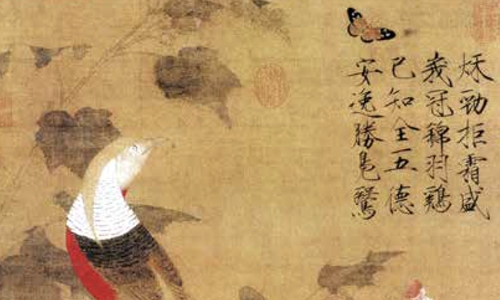Chinese Cultural Relics
Painting Academy of the Song Dynasty
During the Song Dynasty (960-1279), the imperial courts set up the Hanlin Huayuan (Imperial Painting Academy). The academy was a pool of painters for the imperial court and was the painting creation center for the imperial courts, imperial families and aristocrats. Renowned painters from across the country gathered in the academy, lived on salary paid and guaranteed by the imperial court, enjoyed a stable and comfortable environment for artistic creations, had the opportunities to exchange with other painters and learn from one another and to learn the art of imperial court paintings, and had the convenience to further improve their skills. In the Song Dynasty, the academy made great contributions to the prosperity of the painting art.
The painting academy in the Northern Song Dynasty (960-1127) developed to its peak level during the reign of Emperor Huizong (reigned 1101-1125).Politically incapable of ruling the country, Emperor Huizong chose to trust corrupt and incapable officials and led the Northern Song Dynasty to its demise. However, in the field of painting, he demonstrated his talent and ability and can be considered a connoisseur of art. Due to his personally hobby, the emperor gave special emphasis to the development of the painting academy. His masterpieces included the flower-bird painting Hibiscus and Golden Pheasant and Auspicious Cranes. He also created many figure paintings and landscape painting.
About the book
Chinese Cultural Relics Written by Li Li Published by China Intercontinental Press

Painting Academy of the Song Dynasty
During the Song Dynasty (960-1279), the imperial courts set up the Hanlin Huayuan (Imperial Painting Academy). The academy was a pool of painters for the imperial court and was the painting creation center for the imperial courts, imperial families and aristocrats. Renowned painters from across the country gathered in the academy, lived on salary paid and guaranteed by the imperial court, enjoyed a stable and comfortable environment for artistic creations, had the opportunities to exchange with other painters and learn from one another and to learn the art of imperial court paintings, and had the convenience to further improve their skills. In the Song Dynasty, the academy made great contributions to the prosperity of the painting art.
The painting academy in the Northern Song Dynasty (960-1127) developed to its peak level during the reign of Emperor Huizong (reigned 1101-1125).Politically incapable of ruling the country, Emperor Huizong chose to trust corrupt and incapable officials and led the Northern Song Dynasty to its demise. However, in the field of painting, he demonstrated his talent and ability and can be considered a connoisseur of art. Due to his personally hobby, the emperor gave special emphasis to the development of the painting academy. His masterpieces included the flower-bird painting Hibiscus and Golden Pheasant and Auspicious Cranes. He also created many figure paintings and landscape painting.
About the book
Chinese Cultural Relics Written by Li Li Published by China Intercontinental Press

Hibiscus and Golden Pheasant by Emperor Huizong of the Song Dynasty, collected by the Palace Museum in Beijing Photo: Courtesy of China Intercontinental Press

